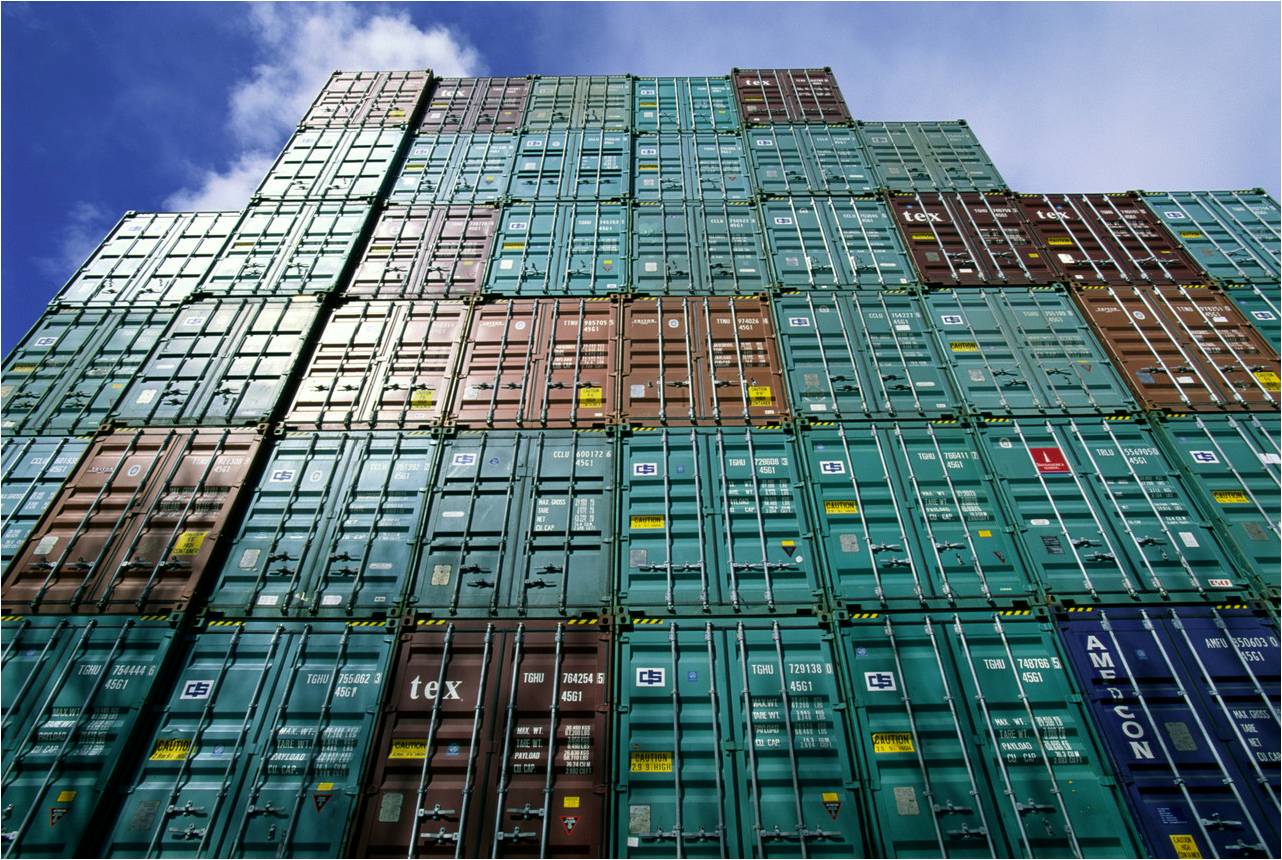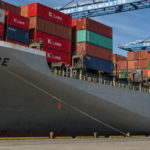What?! Russia/Ukraine Conflict Could Ease U.S. Port Congestion & Freight Rates?
It’s generally accepted that World War II ended the Great Depression. Could the Russia conflict end America’s supply chain crisis? Or at least mitigate it? Hmmm…
Greg Miller wrote an American Shipper article, How invasion of Ukraine could ease shipping logjam off US ports, which reports on an expert opinion that this current conflict could ease freight rates and improve the flow of bottlenecked supply chains for U.S. shippers.
The idea of war reducing freight rates is a bit counterintuitive. Usually war disrupts shipping routes while increasing goods and supplies that need to be shipped around the world. This increases demand on operating trade routes, which puts upward pressure on freight rates. Miller begins his article by addressing this:
The traditional wisdom is that geopolitical chaos is good for shipping demand. Trade patterns are disrupted and become less efficient. Cargo must travel longer distances. Rates rise.
But Niels Rasmussen, chief shipping analyst at BIMCO, the world’s largest shipping association, believes Russia’s invasion of Ukraine will be bad for shipping demand.
The war “will hurt growth in all shipping segments,” he maintained in a report published Monday. Citing estimates that the conflict could shave 1% off global GDP growth, he said: “No matter the specific Russia and Ukraine export developments, this will hurt growth projections for all shipping sectors.”

Let’s say Rasmussen is correct and the conflict reduces global GDP by 1% and we further assume that 1% is evenly enough distributed that it reduces America’s GDP by 1%. Add to that a further reduction to U.S. importing and exporting demand (especially the former) thanks to record high inflation. Such a decrease in demand certainly would create downward pressure on freight rates.
However, would ocean freight carriers be able to compensate (even overcompensate) for the reduced demand by reducing capacity?
Think back to the beginning of the pandemic. Carriers were projected to lose billions with a reduction of shipping demand. We all know the exact opposite ended up happening, but in the beginning there was a dip in demand. That dip did not cause a drop in freight rates because the carriers utilized their alliances to blank (cancel) hundreds of sailings, reducing capacity well below market demand. Freight rates actually climbed. Then they soared with the explosion of demand due to lockdowns and government stimuli.
That explosion of demand is a massive piece to the puzzle of U.S. port congestion. Month after month after month after month of near-record to record-high cargo hitting U.S. ports that lack efficiency due to years of dockworker unions fighting automation and exasperated by COVID protocols; equipment and container maldistribution, thanks largely to all those blanked sailings; and trucker shortages add up to the bottlenecked ports we’ve been suffering for well over a year.
Now imagine the demand part of that puzzle was alleviated.
“When the traffic jam of ships off U.S. ports does finally clear, stranded shipping capacity will be injected back into the marketplace, creating more downward pressure on freight rates,” Miller writes in his article.
That quote followed Miller’s reporting of how Rasmussen (and another analyst) sees the war, including its energy inflation impact, reducing demand:
“The impact of the war on the global economy and consumer confidence may weaken growth prospects,” while the war’s effect on oil, wheat and corn prices could “lead to the destruction of demand as consumers and businesses prioritize spending.” Historically high prices for ship fuel “will only add to the inflationary pressure.”
Stifel analyst Ben Nolan made the same point in a new client note, cautioning that energy inflation could hit consumer spending and “the container industry … could be negatively impacted.”
Rasmussen said that demand destruction “could lead to an earlier ‘return to normal’ from the current elevated demand, which in turn could ease congestion in ports.”
Not only do the experts Miller is reporting on think West Coast congestion and freight rates will improve, but the war will also create downward freight rates specifically on U.S. imports through East Coast ports:
S&P Global Platts pointed to another potential negative for container rates in the trans-Atlantic. “As major shipping lines refuse to carry cargoes to Russian ports in the Baltic Sea, more space could become available for headhaul cargoes from North Europe to the East Coast of North America,” it said, adding that this may bring rates lower, or alternatively, compel carriers to cancel trans-Atlantic sailings to support rates.
There’s that blank sailing option from carriers again. They’ve had so much financial success after utilizing their alliances to reduce capacity through blank sailings when demand dips or looks like it’s about to dip, it’s hard to imagine they won’t continue this strategy.
In the short-term, downward pressure on freight rates to East Coast ports is not what’s being seen. The conflict is currently creating congestion at European ports, which is something that helps drive up freight rates. How that European congestion is being created by the Russia conflict does get a paragraph in Miller’s article:
Russia-bound container cargoes require increased inspections, slowing operations at European ports. Almost all shipping lines have now suspended service to Russia, dropping off Russia-bound boxes at other terminals en route. The result is increased congestion at European container ports — and congestion is a positive driver of freight rates.
Miller calls that “the immediate effect in one region” before launching into the further down the road stuff already quoted and discussed above.
Of course, I have trouble thinking of the congestion at European ports as only affecting one region. Disruptions at ports, canals, or other important international shipping points tend to ripple across the global supply chain. Congestion at European ports certainly will have a negative impact on cargo heading for U.S. East Coast ports.
When it comes to the really big impact on U.S. shipping (as well as the economy and everyday life of Americans) in this whole mess, I believe inflation is the top factor. The White House announced today a ban on Russian oil, liquefied natural gas, and coal by executive order from President Biden.
We’ve already felt it at the gas pumps. We see it our gas bills (my March PG&E bill is up over 75% from what it was in January without increasing the use of our gas heaters). We’re about to see it get even worse. Thomas Barrabi reported in the New York Post:
The US imported about 672,000 barrels per day of crude oil and petroleum products from Russia in 2021, according to data from the Energy Information Agency. That total accounted for roughly 8% of all US imports.
It’s hard to think of it as a positive that inflation may decrease demand enough to relieve port congestion and even bring down freight rates a little. It’s doubtful there’s a net gain there. In fact, it’s probably net loss for Americans. What’s worse is beyond carriers’ ability to manipulate capacity to prop up freight rates, higher oil prices is also an upward pressure on freight rates.




